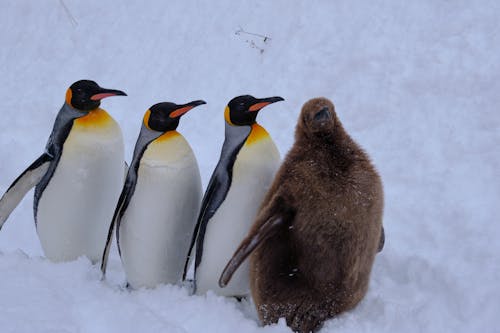The Birds You Can Find in Spring and Winter
Bird watching connects you to nature while observing birds in their natural habitats. Birders tend to love the seasons, because every season presents an opportunity for new bird’s — a different view of bird life. We have covered the best birds to see in spring & winter, so let us take a closer look at the best ways to bird watch and get ahead on your bird-watching season.
The Importance of Watching Birds In the Winter
Bird watching is not only about having a stroke in spotting bird but also understanding their behavior and migration. Due to the nature of migratory bird species and the seasonal pattern they follow, certain areas become more active than others at different times of year. Through the seasons, bird watching helps you see which birds are present and when, learn about their habits, and help bird conservation by keeping track of what species are out there!
Bird Watching in Spring
For birdwatchers, of course, spring will be an exciting time as migratory birds again arrive to breed. And, from warblers and songbirds to raptors, there are bird in a number of eco-regions including woodlands, grasslands and wetlands. It is a time when many birds are most active, allowing us to see behaviors that can be difficult at other times of year.
Birds to Spot in Spring:
When most people think of hummingbirds, they picture the Ruby-throated Hummingbird which are found throughout North America during spring, summer, and early autumn as they flit about flowers and feeders. Bright green plumage with an iridescent red throat makes them excellent candidates for observation.
- Baltimore Oriole: Easily recognized by their bright orange and black feathers, the Baltimore oriole is a stunning bird to observe in spring. They can be found in wooded regions or around fruit trees.
- Eastern Bluebird: Easily recognized by their brilliant blue plumage and rusty red breast, the eastern bluebird is a common visitor in our yards during spring. They usually dwell in open fields, sub-urban areas and even in orchards.
- Barn Swallow: These are the aerial acrobats you watch swooping in the skies hunting insects. No—Barn Swallows will frequently be seen near the water or in open fields.
- American robin: to awaken from its slumber and grace us with its iconic red breast and sunny song — another symbol of spring. You can find these bird’s in gardens, parks and backyards.

Spring Birdwatching Tips:
- Be an Early Bird: The best time to find bird in the spring is early in the morning when they are most active.
- Search For Nests: A lot of birds get to building a nest in spring, so it’s an excellent time to look out for nesting.
- Pack the Binoculars: Birds can be away, especially if they are in trees so binoculars will help see them up closer.
Bird Watching in Winter
Bird watching in the winter may not be as vibrant and bustling as spring months, but it is one of the best times to witness bird adapted for warmer climes. Winter is a time when many birds, such as sparrows and waterfowl, become more prominent and easier to observe looking for food and shelter in the snow-covered landscapes of their northern ranges. Exciting sightings can also be from migratory species that have flown south for the winter too.
Birds to Spot in Winter:
- Dark-eyed Junco:This common “snowbird,” one of the most recognizable of all small sparrows, is characterized by its slate-gray upperparts, white belly. On weekends, among many one-or-two-syllable words some more than once repeated in series — Juncos Winter well known ground foragers in the fields, forests and yards.
- Northern cardinal — Its bright red plumage makes the northern cardinal stand out against a snowy winter backdrop. It spends the winter in woodlands and residential areas.
- Woodpeckers: Many species of woodpecker, including downy woodpecker and red-bellied woodpecker, can be seen in winter. You may see them knocking on wooded areas in some search of food.
- Snow Goose — Snow geese, which breed in the north and snow here during migration. It should be quite simple to identify them as they are large white birds with black-tipped wings and tend to fly in flocks.
- Bald Eagle: Winter is often the peak season to see bald eagles, especially in areas located farther north. These large birds are often found in rivers, lakes and reservoirs where they fish.
How to do Birdwatching in winter:
- Wear Warm Clothes: During bird watching in winter you might end up catching a cold, so dress with back warm clothes, gloves and hats.
- Find Food Sources: In the winter, birds are frequently spotted near feeders or natural food sources, such as berry bushes and branches of trees with seeds.
- Stay Back and Watch: Birds are timid this time of year, so creep up slowly and do not disturb their homes.

Birds usually have seasonal behavior changes
If you want to deepen your bird-watching experiences, understanding the seasonal behavior of birds can go a long way towards helping. In spring, bird’s are frequently occupied with territoriality and courting and nest building. It is during this time that many birds sing their most distinctive songs to woo mates. Winter is another story: while many species are quieter, they are also more intent on foraging and surviving. Many migratory species also winter in flocculent groups, so they are easier to see all together.
Conclusion
Bird watching is a seasonal window into nature, whether you are paying attention to the first migratory bird splashing through after winter or hunkering down with the same tough species who will adventure out in the cold.
Year-Round Reward Every season brings a new group of birds and different behaviors, rewarding bird watching year round. Acquainting yourself with the seasonal patterns and knowing what birds to expect will enrich your experience and appreciation for this amazing world of birds!

